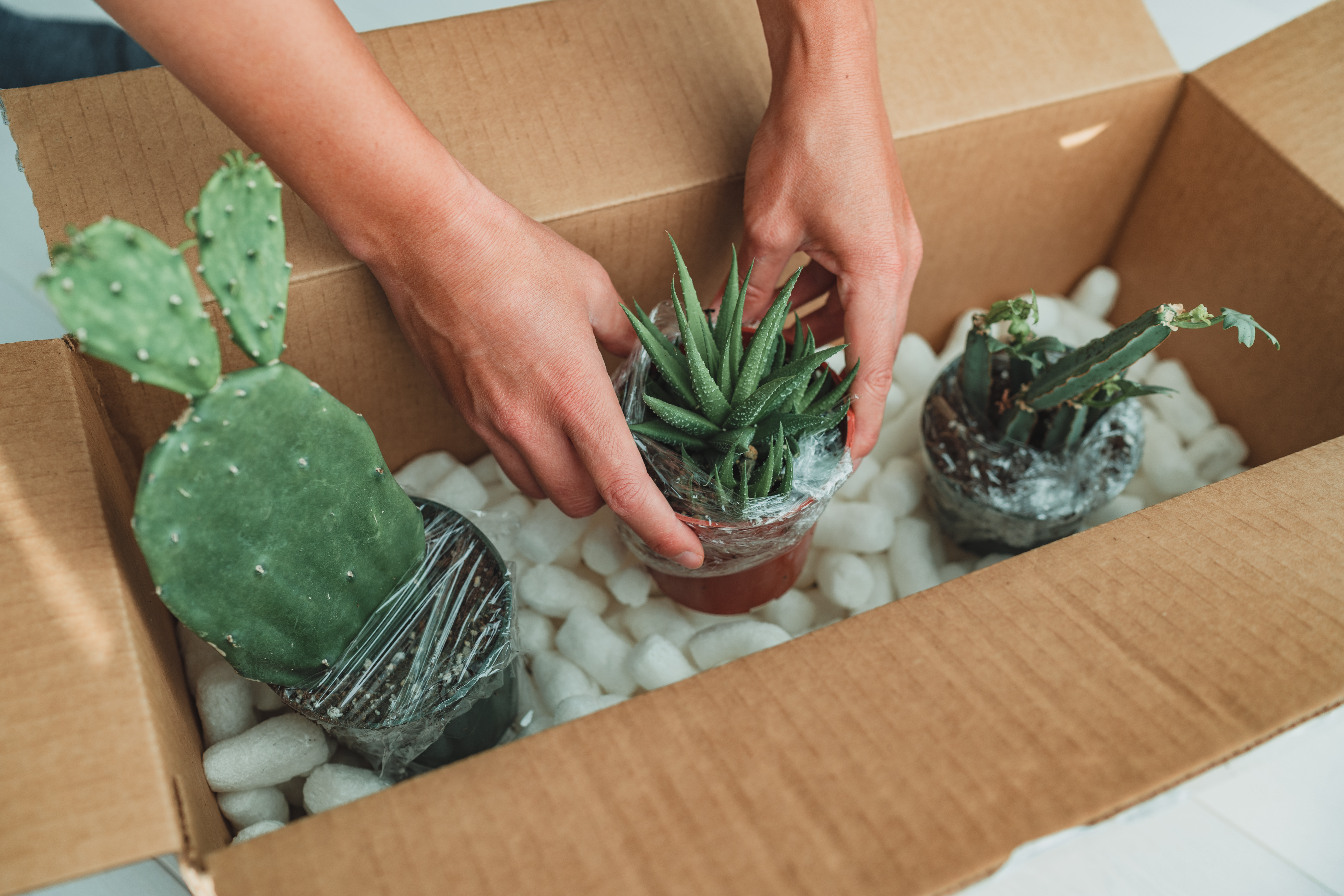Shipping plants by mail can be both risky and a bit tricky. There’s a lot of things you need to take into consideration. Is it a rooted plant or a cutting without any roots? Was it transported in soil or bare rooted? What’s the temperature outside and for how long will it be in transport? Will it be sent directly to the other person's mailbox or will it be picked up at a post office?
Shipping plants by mail
Cool weather
If the temperature is below 40°F (5°C) you should consider not shipping any plants that are sensitive to cold temperatures—this includes most tropical houseplants. If you want or need to ship a plant regardless of the temperature, you can include a heat pack in the box and make sure the plant is in the mail for the shortest period of time as possible. Try to avoid shipping a plant with wet soil or roots.
We advise against shipping any plants if the temperature is below 32°F (0°C) unless you can guarantee that it will arrive fast enough and be packed up well enough to avoid any damage to the plant from the cold temperature.
Hot weather
Excessively high temperatures can also damage your plants in shipping. Plants can easily get overheated in hot vans or dry out too much in transport. So if you need to ship plants, make sure the temperature isn’t too high, that the shipping will be quick and that your plant is watered well enough to survive the trip.
Just as there are heat packs for shipping in cold weather, there are also cold packs, but be aware that these should not be placed in direct contact with the plant or the roots.

Rooted or not?
Some plants are easily shipped as unrooted cuttings— succulents, stem cuttings from thicker types of plants, bulbs and rhizomes, for example. Of course, you should be sure that the cutting you take will be viable and grow in the future. You wouldn't, for example take a Monstera cutting that lacks a node.
However, rooted plants are much safer to both ship, exchange or purchase. There's a much higher chance that the plant will survive after arrival if it's already rooted from start.
Substrate
If the plant is already planted in a pot with soil, you can, of course, ship the plant as it is. Just make sure that the soil is kept slightly moistened and not too dry or wet. You’ll also need to cover the soil properly so the soil won’t fall out of the pot.
Keeping the soil and pot will add weight and cost to your shipment, so it is also possible to remove the soil carefully and instead put the roots into a plastic bag with a substrate that will retain water for the roots during the transportation. Perlite and Sphagnum moss are the most common substrates used when shipping plants.
Wrapping the roots with moistened paper towels and then a plastic bag or plastic wrap is another way to keep the roots hydrated.
- Smaller cuttings from tropical plants, such as Hoyas and Tradescantias, can be placed in a plastic zip-top bag to keep them hydrated during shipping.
Pack it up
Start with choosing an appropriately sized box. You need to have room for the whole plant and its wrapping. It is also very important that the box is durable and is able to handle the stress of shipping.
Pack up the roots properly according to what type of substrate you're using and if the pot is coming along.
Wrap the entire plant carefully with bubble wrap, news paper or wrapping paper. If the temperature is cold outside, you should use multiple layers to ensure it has good insulation.
Secure the packed plant into the box so it doesn't move around during the shipment. If it can shift in the box, you'll risk breaking or crushing it. By taping the packed plant into the inside of the box you'll have it secured. You can also fill out any extra space with filling materials.
If you're planning on using a heat pack inside the box you need to add it just before you ship the plant. Make sure that the heat pack doesn't come in contact with or cause any heat damage to the plant. The heat pack should only keep the air inside the box warm.
Close the box and tape it up properly and then it's ready to send!
Legality of sending plants
Another thing to keep in mind when sending plants is to make sure it’s okay to ship it to its destination. There are often many laws and regulations that limit the import of plants, plant parts or soil when sending to other countries. Always double check that the plant you’re planning to send is okay to send to that country or state, and under which conditions. Sometimes a phytosanitary certificate is needed. The same applies to buying plants from other countries. Ensure you check all the relevant regulations regarding shipping and receiving plants to prevent them being held at customs or even destroyed.